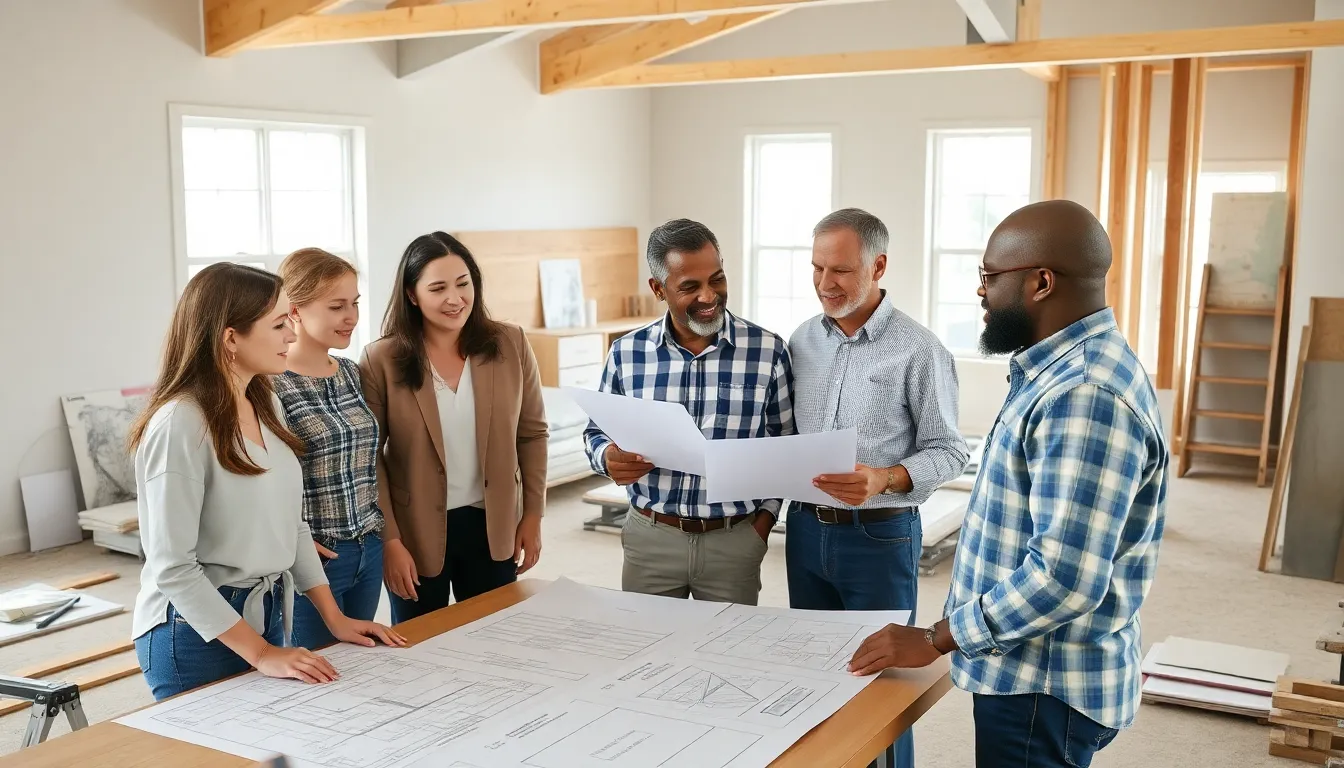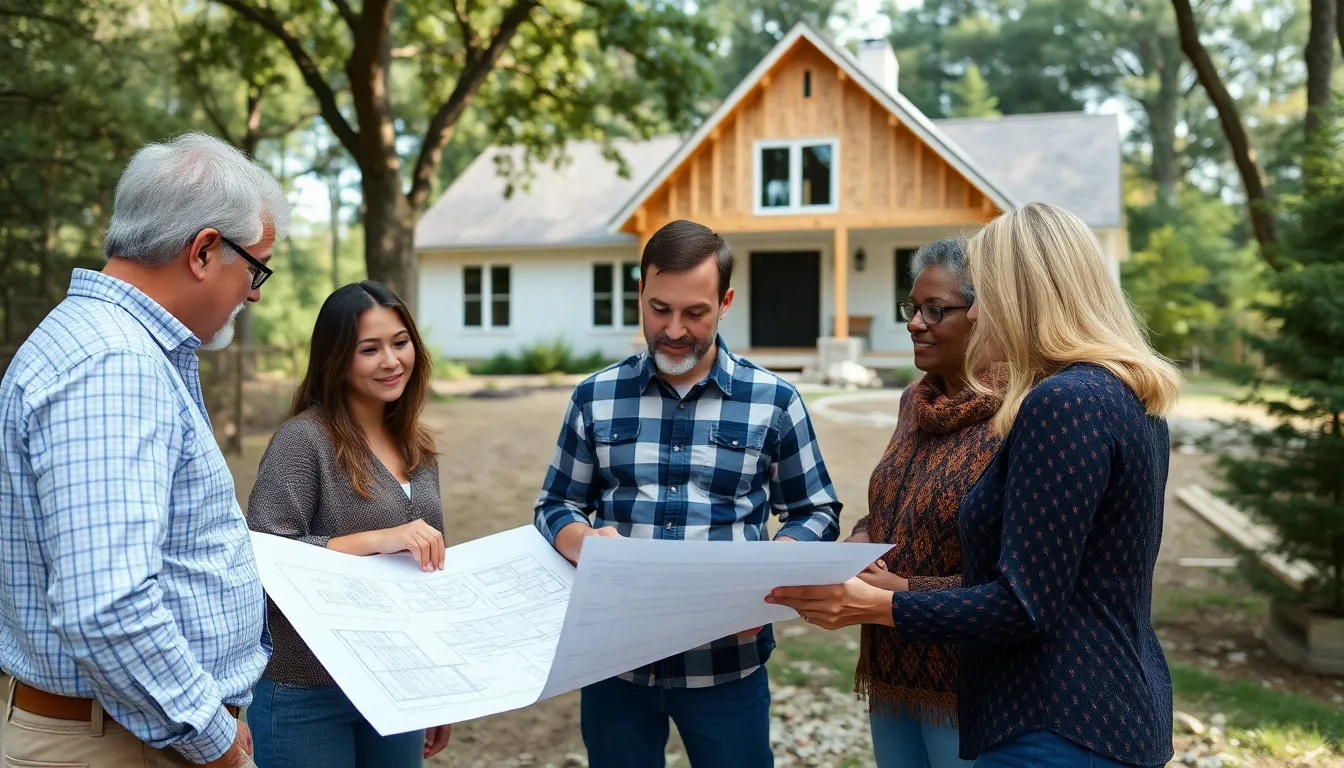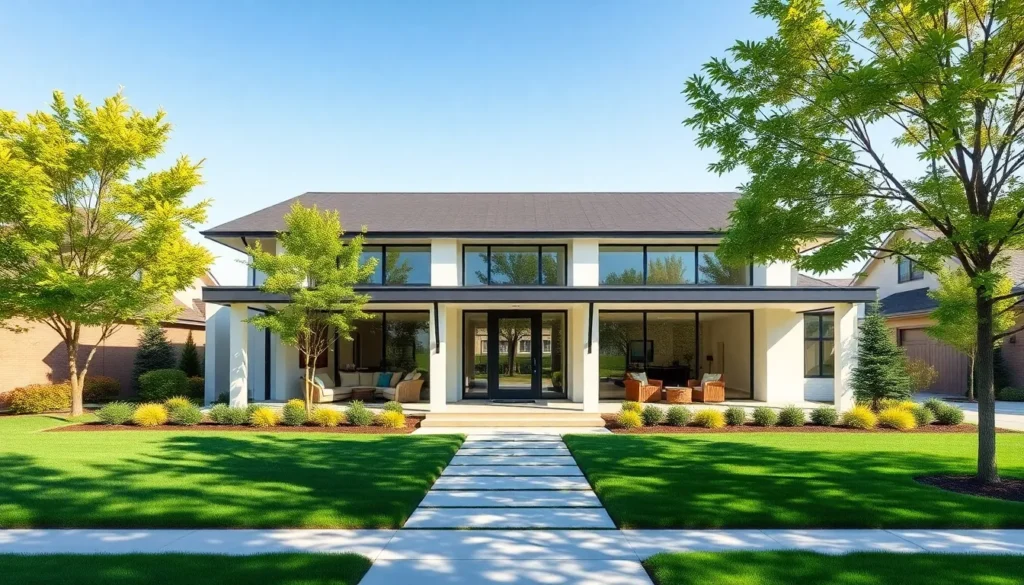Table of Contents
ToggleImagine living in a home that’s as unique as your favorite pair of socks—comfortable, quirky, and definitely not something you’d find at a big-box store. Custom homes offer that delightful opportunity to break free from cookie-cutter designs and create a space that reflects individuality and style. It’s like giving your lifestyle a tailored suit instead of a one-size-fits-all approach.
Building a custom home isn’t just about bricks and mortar; it’s about crafting a sanctuary that meets every whim and fancy. Whether it’s a secret reading nook or a kitchen that could make a celebrity chef drool, the possibilities are endless. So why settle for ordinary when you can have extraordinary? Dive into the world of custom homes and discover how to turn your dream dwelling into a reality that’ll make your friends envious and your family feel right at home.
Overview of Custom Homes
Custom homes offer a unique opportunity to create living spaces tailored to individual tastes. These homes can vary in design, layout, and materials, allowing homeowners complete control over their environment. Flexibility plays a crucial role in custom home building, enabling the incorporation of specific features that cater to lifestyle needs.
Customization typically begins with selecting a floor plan. Homeowners often work with architects or designers to develop plans that optimize space and meet functional requirements. Choices expand with options such as energy-efficient systems, materials, and smart home technology, enhancing comfort and sustainability.
Cost structures in custom homes differ significantly from traditional homes. While initial expenses may rise due to personalized features, potential long-term value increases with smart investments. Many builders offer financing solutions, making the process more accessible for a wider range of buyers.
Location remains another important factor in custom home projects. The right site can significantly influence design choices and overall functionality. High-demand areas may require strategic planning to navigate real estate challenges effectively.
Exploring custom home building offers numerous advantages. Stepping beyond generic constructions allows individuals to express personal flair while addressing practical needs. The entire process transforms the dream of homeownership into a reality, resulting in a space that genuinely resonates with its occupants.
Benefits of Custom Homes


Custom homes offer various advantages that significantly enhance the living experience for homeowners. Personalization and design flexibility stand out as primary benefits.
Personalization and Design Flexibility
Homeowners can create a unique space that reflects their style. Selecting floor plans tailored to individual needs allows for adaptability in the layout. Incorporating personal preferences impacts every aspect, from kitchen designs to bathroom features. Collaborating with architects and designers enhances the creative process. Specific materials chosen can complement the homeowner’s aesthetic, ensuring the living environment feels uniquely theirs. Customization options enable better functionality and comfort, making each home distinct.
Energy Efficiency and Sustainability
Energy efficiency remains a key benefit of custom homes. Homeowners can integrate modern energy-efficient systems that reduce long-term utility costs. Opting for sustainable materials contributes to a lower carbon footprint. Incorporating smart home technology increases convenience while promoting energy savings. Features like energy-efficient windows and insulation can significantly enhance overall home performance. Sustainable choices reflect environmental consciousness, making custom homes not only innovative but also responsible.
The Custom Home Building Process
Building a custom home involves several key steps that ensure a smooth transition from concept to reality. Navigating this process requires attention to detail and clear communication with various professionals.
Choosing the Right Builder
Selecting the right builder leads to a successful custom home project. Researching local builders provides valuable insights into their past work and reputation. Checking online reviews and testimonials helps gauge customer satisfaction. Scheduling interviews enables potential homeowners to discuss their vision and confirm compatibility. Requesting references can also yield useful information about a builder’s reliability and craftsmanship. An experienced builder aids in navigating permits, material choices, and construction timelines, ensuring the project aligns with both budget and design goals.
Understanding the Timeline
The timeline for building a custom home varies based on several factors but generally spans several months to over a year. Consultation and design phases often take between four to eight months. Securing permits can add another month or more to the timeline, depending on local regulations. Once construction begins, the building phase usually lasts from six months to over a year, influenced by home size and complexity. Setting realistic timelines helps manage expectations while also accommodating potential delays, common in construction. Open communication with the builder throughout each phase keeps homeowners informed, fostering a smoother process.
Financing Custom Homes
Financing a custom home involves careful planning and consideration of various factors. Establishing a budget serves as the foundation for making informed financial decisions.
Budgeting for Your Dream Home
Budgeting for a custom home starts with determining overall costs. These costs typically include land acquisition, construction expenses, permits, and interior finishing. Owners often identify their priorities to allocate funds effectively. Setting aside a contingency fund for unexpected expenses is crucial. Keeping track of spending helps ensure adherence to the budget throughout the process.
Different Financing Options
Several financing options exist for custom homes. Traditional mortgages are a popular choice, often based on the home’s completed appraised value. Construction loans offer short-term financing, covering building costs before transitioning to a permanent mortgage. For those seeking alternative funding, personal loans or home equity loans may provide flexible financial solutions. Government-backed loans can also cater to first-time buyers, offering favorable terms. Understanding each option’s terms and eligibility helps homeowners choose the best fit for their situation.
Design Trends in Custom Homes
Custom homes embrace innovative design trends that blend aesthetics with functionality. Homeowners increasingly favor designs that resonate with their personal style while enhancing daily living.
Modern Aesthetics
Clean lines and open spaces characterize modern aesthetics in custom homes. Minimalism remains a popular approach, allowing for uncluttered interiors that provide a sense of tranquility. Natural light is prioritized, with expansive windows and strategically placed skylights. Color palettes often feature neutral tones accented by vibrant splashes, creating inviting atmospheres. Sustainable materials gain traction, as reclaimed wood and recycled elements contribute to both beauty and eco-friendliness. In addition, multifunctional furniture pieces and minimalist décor maximize space efficiency, catering to the needs of modern lifestyles.
Smart Home Integration
Smart home integration continues to revolutionize custom home design. Intelligent systems allow homeowners to control lighting, temperature, and security systems via mobile devices. Automation options enhance convenience, adapting to individual schedules and preferences. Energy efficiency is improved through smart thermostats and LED lighting, positively impacting utility costs. Advanced security features, such as video doorbells and motion sensors, provide peace of mind. Additionally, voice-activated technology streamlines everyday tasks, making homes more accessible and user-friendly. Homeowners benefit from a seamless blend of technology and design, enhancing overall living experiences.




